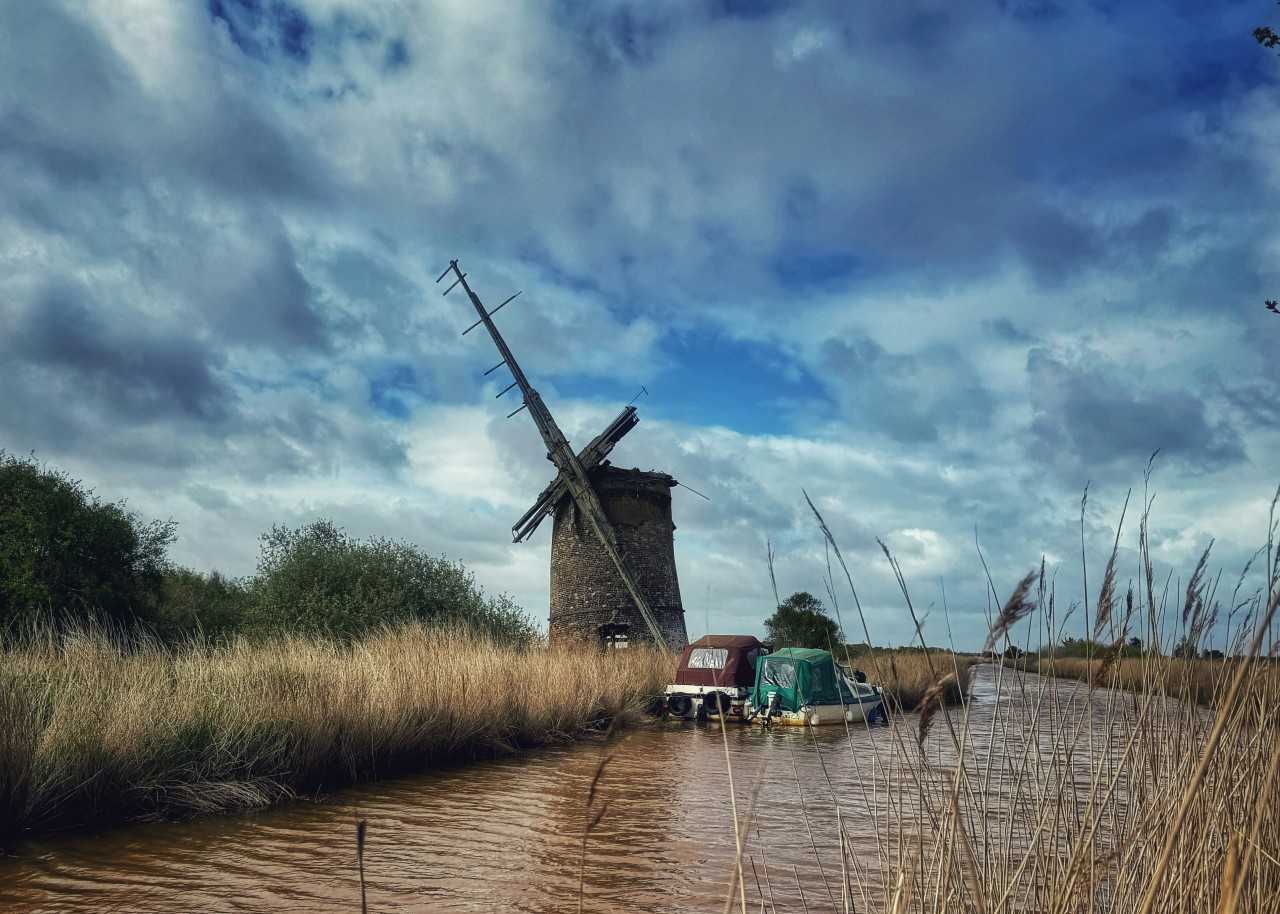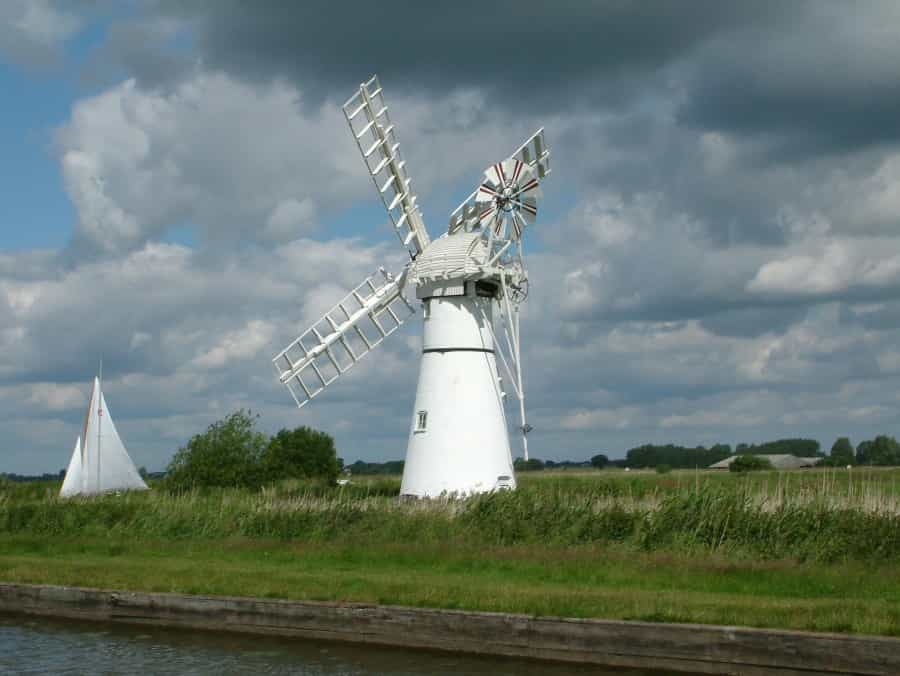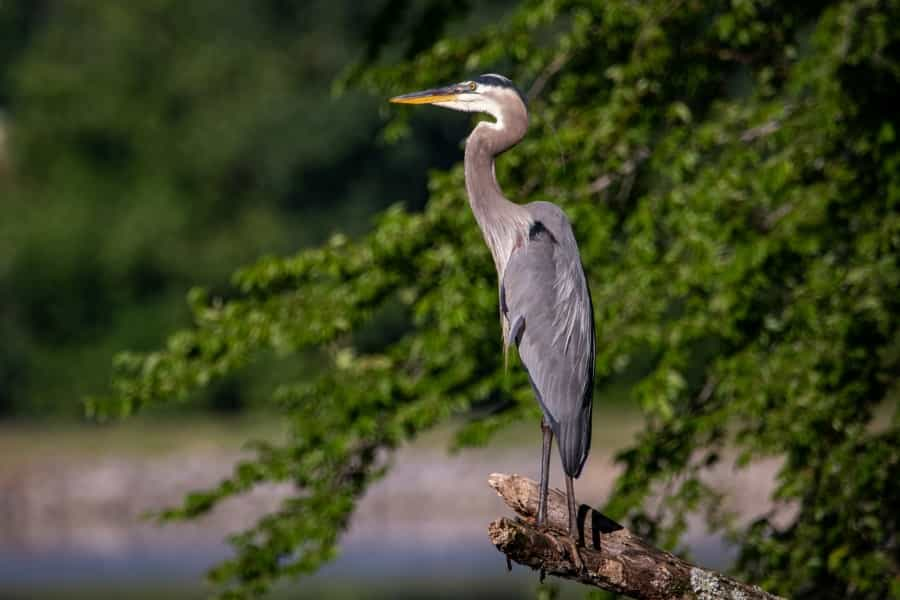The Broads Walks

With nearly 200 miles of footpaths running through mostly flat landscapes, the Broads National Park is a fantastic area for a walk. The easygoing terrain makes it a particularly good choice for occasional walkers and families with children who might struggle on more challenging walks.
Walking is an excellent way to give yourself a chance of spotting some of the wildlife that this area is renowned for. Tread quietly and you may be treated to glimpses of kingfishers, otters and rare butterflies.
This guide to walks in the Norfolk Broads covers some of the best walking routes in the area, from family-friendly short strolls to longer trails that take you into more remote corners of the park, and shows you how to get the most out of the experience.
Top walking routes in the Norfolk Broads
With so many wonderful watery landscapes to explore, it's difficult to choose the best walk in the Broads, but our outdoor specialists at Pitchup have come up with four favourite trails here. Whether you're looking for a short circular walk, an accessible route or a long-distance trail, our list should have something to suit all visitors.
How Hill Nature Trail
Length: 1.5 miles
Difficulty: Easy
Time: 40 minutes
Start: Toad Hole Cottage, where you'll need to pay a small entry fee
The short nature trail at How Hill makes a lovely introduction to the area’s wildlife, especially for families. Within the grounds of an environmental study centre near Ludham, the easygoing trail runs through the woods and marshes, with boardwalk sections and several information boards to tell you what to look out for. Sit quietly in one of the two bird hides and you may spot marsh harriers and bitterns. (Please note that dogs are not permitted on the trail as they can scare the birds.)
You can extend your time at How Hill with a stroll around the ‘secret gardens’, a boat ride on the Electric Eel (April to October) or a tour of Toad Hole Cottage Museum, a historic marshman’s cottage set up as it would have been in Victorian times.
Good to know: You can also use How Hill as the starting point for the longer How Hill to St Benet's Abbey route.
Bure Valley Path
Length: 9 miles
Difficulty: Easy
Time: 3 hours
Start: Aylsham station or Wroxham station
The nine-mile Bure Valley Path runs from Aylsham to Wroxham, running alongside the historic narrow-gauge railway that links the two and passing through the pretty villages of Coltishall and Buxton along the way. That makes this trail one that's packed with variety – not only will you get to see lovely countryside and traditional villages, but you'll also have the added fun of spotting heritage trains as you walk.
The path here is well made and fairly flat so it's suitable for all abilities and all weathers. A popular way to take on this trail is to walk it one way and then catch the train back. Find timetables and booking information at the Bure Valley Railway website.
Good to know: There are pubs and cafés in Buxton and Coltishall, so you should be able to find refreshments easily enough along the route of your walk.

Weavers’ Way
Length: 61 miles
Difficulty: Easy
Time: 4 days to complete the full trail
Start: Cromer, Great Yarmouth or numerous points in between
Norfolk’s big challenge for adventurous walkers is Weavers’ Way, running for 61 miles between Cromer and Great Yarmouth and passing through a good swathe of the Broads en route. Acle and Stalham (home of the Museum of the Broads) are among the Broads settlements along the trail.
The trail takes its name from the weaving industry that thrived in this area in the Middle Ages, and it’s packed with historic sights to look out for – you'll pass by old flint churches, Thurne Mill and the ruins of St Benet's Abbey as well as following sections of disused railway line, passing ancient grazing marshes and heading through woodland areas and market towns.
Despite its length, Weavers’ Way is fairly easygoing, with good terrain underfoot, very little elevation and signposts along the way.
Good to know: You don’t have to complete the full 61 miles! The Norfolk County Council website has several suggestions for walks covering shorter sections of the trail (3 to 18 miles), along with ways to include it as part of a circular walk.
Whitlingham Country Park Great Broad Circular
Length: 2.3 miles
Difficulty: Easy
Time: 1 hour
Start: Car park at Whitlingham Country Park
The waterside trail around the Great Broad is one of the loveliest short circular walks in the Norfolk Broads. Despite its modest length it crams in an awful lot of nature, with visitors often spotting herons, cormorants and kingfishers as they walk.
The 2.3-mile trail may well be enough for some visitors (especially children), but if you'd like to extend your walk there are several other trails in the park, taking in woods, water meadows , a Victorian lime kiln and the ruins of the old manor house.
Good to know: The country park has a lovely café in an old flint barn serving drinks, light lunches and sweet treats. There are also picnic areas at either end of Great Broad, plus a barbecue area in the woods.
Tips for walking in the Norfolk Broads
The walking is fairly easy in the Broads, with little by way of challenging terrain, but it's always worth preparing and packing well for your walk to make sure you're comfortable and can make the most of your day.
What to pack for your walk in the Broads
-
Suitable footwear – even fairly flat trails can be muddy and rough in parts, so decent shoes are always a good idea
-
Sun cream and a hat – don't forget this is one of the driest and warmest parts of the UK, so the sun can catch you out even on cloudy days
-
Snacks and water – even on short walks you'll probably appreciate the chance to rest and refuel along the way
-
Binoculars and wildlife guides – so you can identify the wildlife you’ve spotted, and get a good look at it
Finding and navigating trails in the Broads
Several websites, such as the Broads National Park site and Walking Britain, have downloadable route maps that you can print before setting off. Apps such as All Trails and Komoot also have several routes to choose from, with the advantage of user updates and GPS tracking to keep you on the right trail.
In a wildlife-rich area like the Broads it's really important to disturb your surroundings as little as possible, so stick to marked trails as much as possible to avoid trampling on vital habitats.
Conservation and wildlife

Conservation and sustainability are huge priorities in the Broads – as well as being a rich area for biodiversity, the park is also at risk from climate change-related sea level rises because of its low-lying watery landscapes. Many rare species live in this park, so it's vital to protect their habitats – you can read a bit more about the area’s flora and fauna in our Broads wildlife guide.
The council maintains the pathways carefully to maintain safe access for walkers while minimising impacts on the natural areas around them. Where possible that means using things like gravel and other natural materials rather than tarmac, and installing boardwalks to negotiate marshy terrain.
When walking in the Broads, you can play your part by sticking to the paths, keeping dogs on leads and taking any rubbish home with you. If you come across a problem on one of the paths, you can report it for the benefit of future walkers.
Planning your trip
Whether you're planning a short stroll or making walks the main focus of your break, exploring the Broads on foot is a fantastic way to see the area’s scenery and discover its unique ecosystems. Walking has great health benefits, and it's a free activity – making it ideal for low-cost getaways. Even if you're not an experienced walker, you should find the marked trails and flat landscapes of the Broads very approachable; just remember to respect the nature around you and follow 'leave no trace' principles.
If you'd like to see even more of the scenery, an outdoor stay gives you the chance to take in those rural views from dawn through till dusk – and with the added bonus of some stargazing after dark too. Grass camping pitches like those at Whitlingham Broad Campsite or Salhouse Broads Camping Corner are among the best budget-friendly Broads places to stay, and they're very well placed for walks. If you'd like a bit more comfort, try one of the cosy glamping pods at Millview Meadow Glamping. To see all your options, check out Pitchup’s complete range of campsites in the Broads.